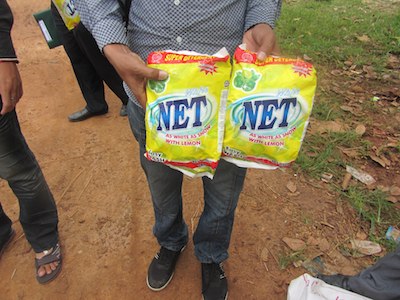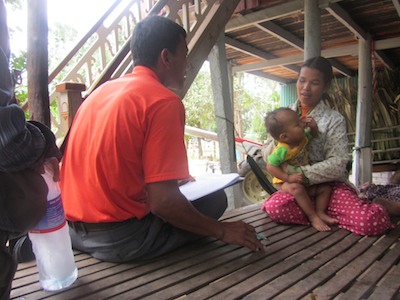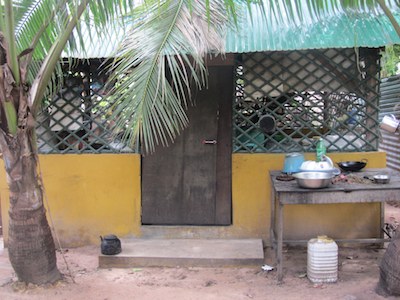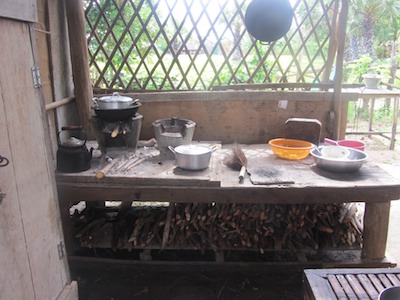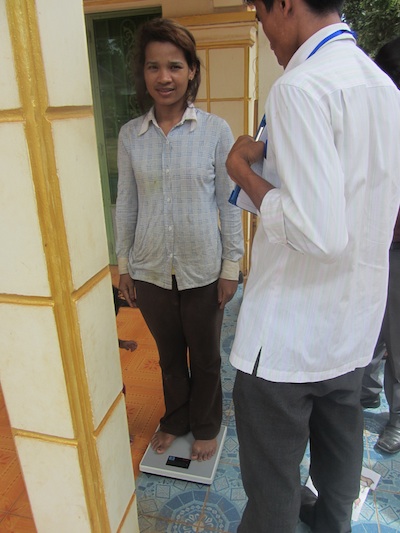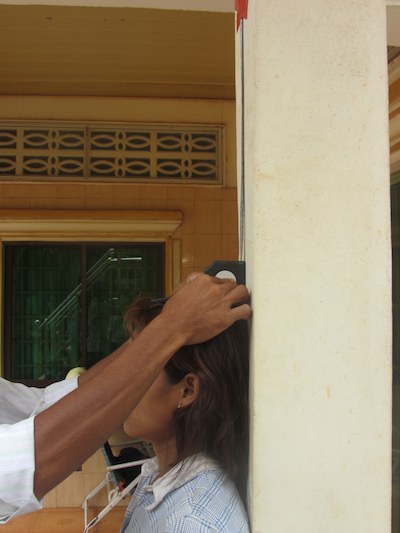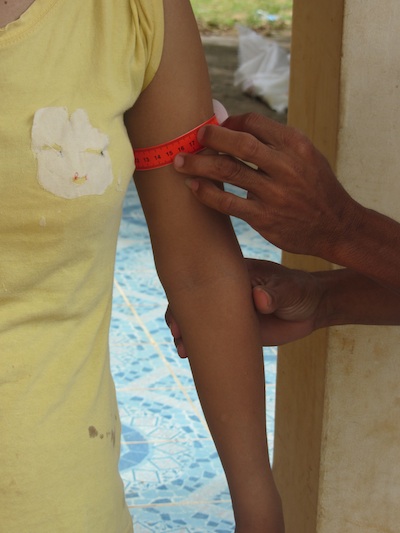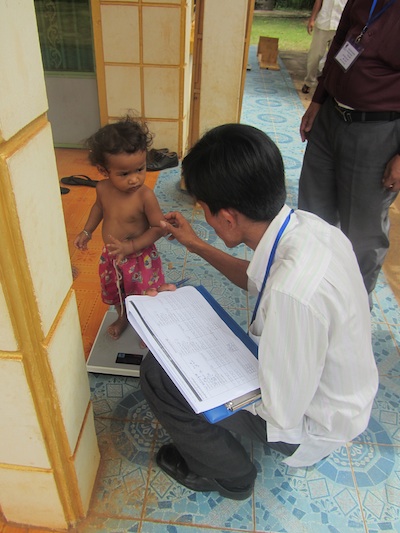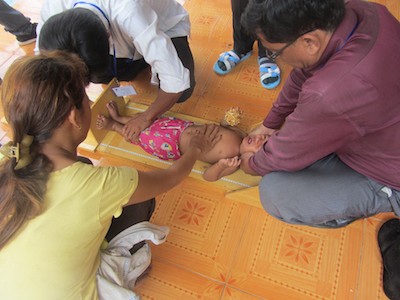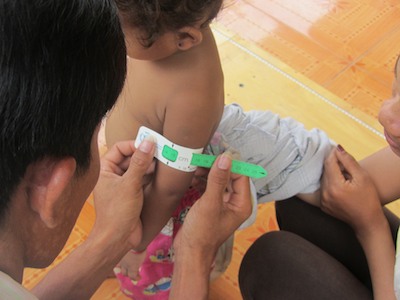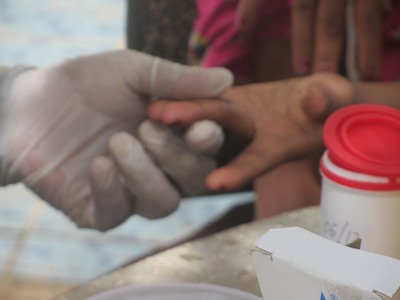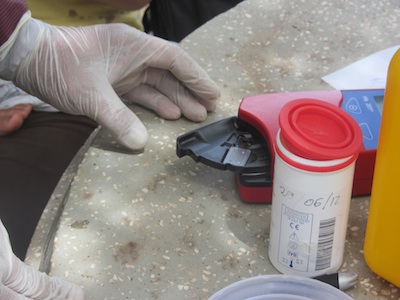Preparations are underway as the countdown to the baseline survey continues. Yesterday morning we checked off one of the most important “to-do”s on our pre-baseline checklist: the test survey. After a week of training, our enumerators had the opportunity to put their new skills to use. This also gave us a chance to work out any “bugs” in the survey.
The day began bright and early, as two vans carrying 20+ people departed from HKI’s office in Phnom Penh to head to the province of Kampong Chhnang. Although FoF is taking place in the province of Prey Veng, Kampong Chhnang is closer to Phnom Penh, and was thus better suited for a day trip.
Our first stop was at the Longvek Health Center, where we picked up iron and folic acid tablets to distribute to the households we were going to visit.
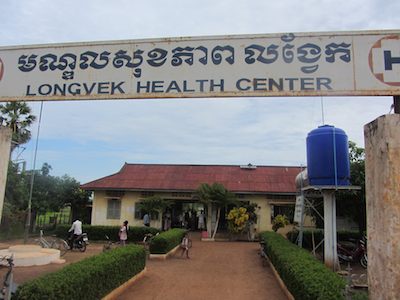
Outside the Longvek Health Center, our first stop in Kampong Chhnang.
Our next stop was at the home of the village chief. We informed him of our plans to meet with different households and ask them questions about nutrition and health. He directed us to the house of the village health volunteer, who would be able to assist us in identifying suitable households to visit.
The final stop for our van was at the house of the village health volunteer. The second van went to the next village to find more households to survey. Outside of the volunteer’s house, the enumerators set up stations to conduct anthropometric measurements and blood analyses. Then the volunteer took us to different houses to meet with women and their families. As an incentive, every woman who agreed to speak with us received a bag of detergent.
The first house we visited was the home of a husband and wife whose three daughters were present. Two of the daughters lived in adjacent houses, while one still lived at home. We interviewed the two daughters who had young children.
As the enumerator worked his way through the survey, I had time to observe the family’s home. Houses in Kampong Chhnang are very different from houses in Vancouver! The houses are all raised so that the “house” part is actually the second story. Underneath the house is the area where most family activity occurs. There are cots, tables, and chairs underneath, taking advantage of the shade the raised portion of the house provides. The cooking is done in a separate area nearby on the property. The kitchen I observed consisted of a cupboard and a heat source. Most families eat from the same pot. This particular family also raised chickens who roamed the yard freely.
The question portion of the test survey went fairly smoothly. One of the challenges was that the infant wanted breast milk before his nap. However, women aren’t comfortable breastfeeding in front of strange men. Unfortunately, it was hard to find enough female enumerators who are able to leave their homes for the 2+ weeks of baseline, so the majority of our enumerators are men.
The final portion of the test survey involved bringing the women and their children to the village health volunteer’s house to get measurements and blood. First the women were weighed, their height was measured, and their mid-upper arm circumference (MUAC) was recorded.
Then their children went through the same process. Most of the small children cried when they were placed on the length board! It must have looked like a scary contraption to them.
Finally, the women and children had their fingers pricked. A drop of blood was placed on a slide that was fed to a machine to analyze the hemoglobin content of the sample. Based on the results, many women were given iron and folic acid tablets.
The day concluded back at the HKI office in Phnom Penh. Everyone gathered to discuss their experiences and raise any questions or concerns. A few questions were further clarified on the survey, but overall the results of the test survey were encouraging. Our enumerators are now confident and prepared to head to Prey Veng for baseline next Wednesday!

